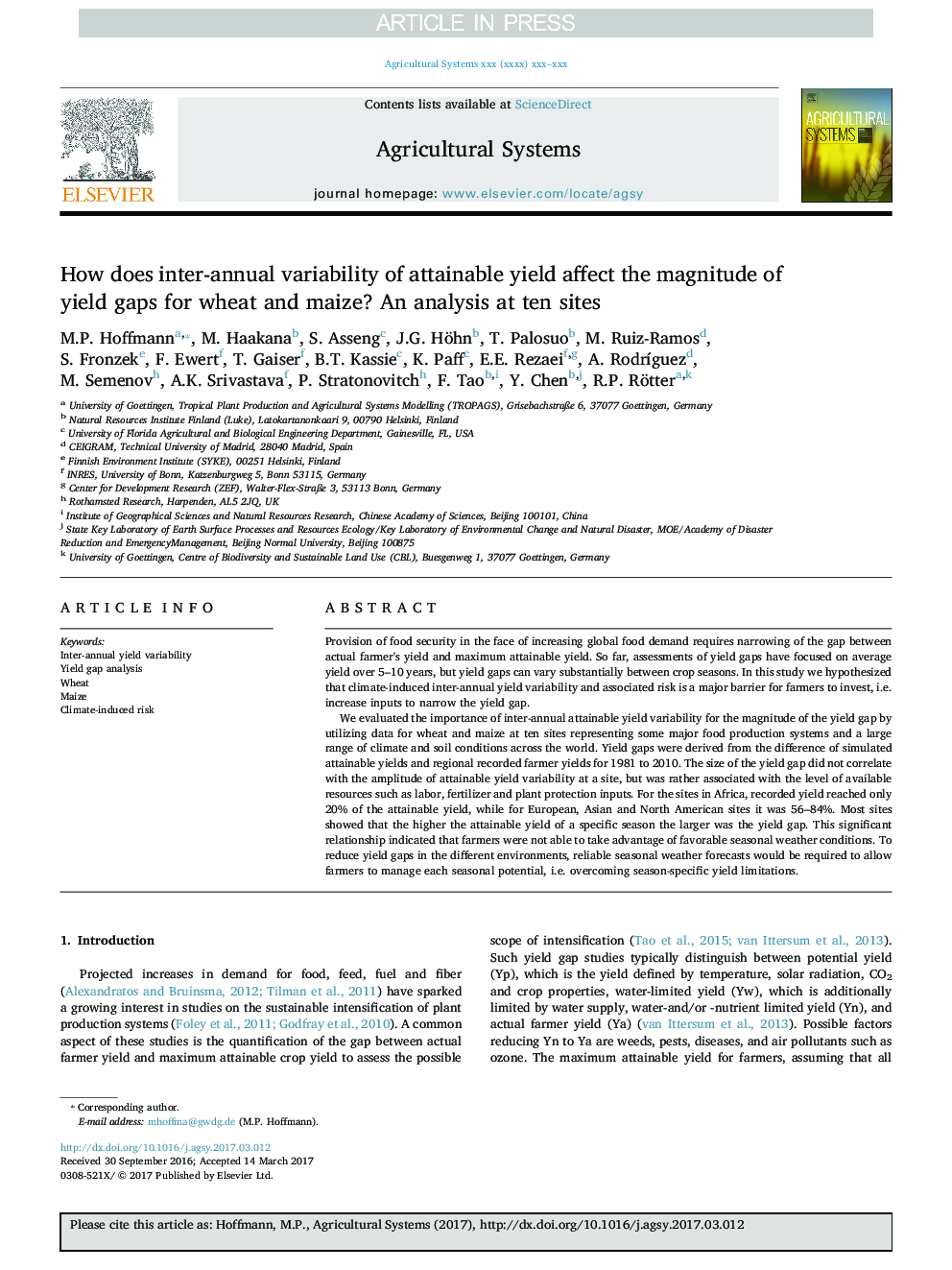| Article ID | Journal | Published Year | Pages | File Type |
|---|---|---|---|---|
| 8875087 | Agricultural Systems | 2018 | 10 Pages |
Abstract
We evaluated the importance of inter-annual attainable yield variability for the magnitude of the yield gap by utilizing data for wheat and maize at ten sites representing some major food production systems and a large range of climate and soil conditions across the world. Yield gaps were derived from the difference of simulated attainable yields and regional recorded farmer yields for 1981 to 2010. The size of the yield gap did not correlate with the amplitude of attainable yield variability at a site, but was rather associated with the level of available resources such as labor, fertilizer and plant protection inputs. For the sites in Africa, recorded yield reached only 20% of the attainable yield, while for European, Asian and North American sites it was 56-84%. Most sites showed that the higher the attainable yield of a specific season the larger was the yield gap. This significant relationship indicated that farmers were not able to take advantage of favorable seasonal weather conditions. To reduce yield gaps in the different environments, reliable seasonal weather forecasts would be required to allow farmers to manage each seasonal potential, i.e. overcoming season-specific yield limitations.
Keywords
Related Topics
Life Sciences
Agricultural and Biological Sciences
Agricultural and Biological Sciences (General)
Authors
M.P. Hoffmann, M. Haakana, S. Asseng, J.G. Höhn, T. Palosuo, M. Ruiz-Ramos, S. Fronzek, F. Ewert, T. Gaiser, B.T. Kassie, K. Paff, E.E. Rezaei, A. RodrÃguez, M. Semenov, A.K. Srivastava, P. Stratonovitch, F. Tao, Y. Chen, R.P. Rötter,
